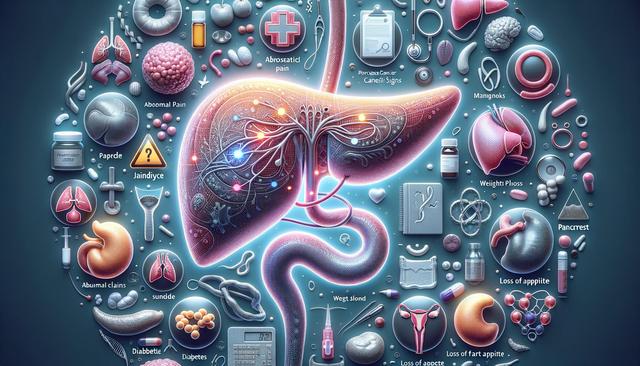Understanding Pancreatic Cancer Symptoms
Understanding Pancreatic Cancer
Pancreatic cancer is a formidable disease that arises when cells in the pancreas begin to grow uncontrollably. The pancreas, a vital organ located behind the stomach, plays a crucial role in digestion and blood sugar regulation. Unfortunately, the symptoms of pancreatic cancer often go unnoticed in the early stages, making it difficult to diagnose until it has progressed. This underscores the importance of understanding the warning signs and seeking medical attention if any symptoms arise. Pancreatic cancer can affect anyone, but certain factors may increase the risk, including age, smoking, diabetes, obesity, and a family history of the disease.

Common Symptoms to Watch For
One of the challenges in detecting pancreatic cancer early is that its symptoms can be quite vague and easily attributed to other, less serious conditions. However, being aware of the most common symptoms can help in recognizing the need for medical evaluation. These symptoms may include:
- Jaundice, or yellowing of the skin and eyes, which occurs when the bile duct is blocked by a tumor.
- Unexplained weight loss and loss of appetite, which can be a result of the cancer affecting digestion.
- Abdominal or back pain, often persistent and worsening over time.
- Changes in stool, such as greasy or pale stools, indicating a problem with digestion.
- Nausea and vomiting, which can occur if the cancer affects the stomach’s ability to empty.
It’s important to note that having one or more of these symptoms does not necessarily mean you have pancreatic cancer, but they do warrant a discussion with a healthcare provider.
Risk Factors and Prevention
Understanding the risk factors associated with pancreatic cancer can aid in taking preventative measures. While some factors such as age and family history cannot be controlled, others like smoking and obesity can be managed. Quitting smoking is one of the most effective ways to reduce the risk of developing pancreatic cancer. Additionally, maintaining a healthy weight through a balanced diet and regular exercise can also lower the risk. For those with a family history of pancreatic cancer, genetic counseling and regular screenings may be recommended to monitor for early signs of the disease.
Diagnostic Approaches
When pancreatic cancer is suspected, healthcare providers may use several diagnostic tools to confirm the presence of the disease. These can include imaging tests such as CT scans or MRIs to visualize the pancreas and surrounding tissues. Endoscopic ultrasounds may also be used to obtain detailed images and, if necessary, a biopsy of the pancreas. Blood tests to check for tumor markers, like CA 19-9, can also aid in the diagnostic process. Early diagnosis significantly improves the treatment outcomes, making awareness of these diagnostic procedures essential for those at risk.
Treatment Options and Support
Once diagnosed, the treatment for pancreatic cancer depends on the stage and location of the cancer, as well as the patient’s overall health. Common treatment options include surgery to remove the tumor, chemotherapy, radiation therapy, and targeted drug therapy. Each treatment plan is tailored to the individual’s needs, and a multidisciplinary team approach is often employed to provide comprehensive care. Support from healthcare professionals, family, and support groups can be invaluable in navigating the challenges of pancreatic cancer treatment. Emotional and psychological support is also crucial, as it can help patients and their families cope with the impact of the disease.
